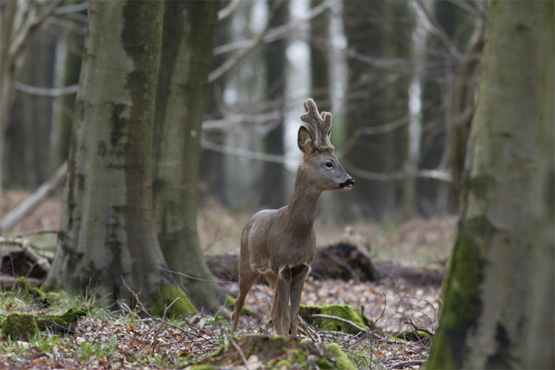Ewan Dryburgh gives his opinion on some of the challenges and requirements of becoming a wildlife photographer.

(Above: Roe Buck in Velvet - Also featuring in this months Almanac - February)
When I started taking wildlife photographs it was a daunting prospect. Where do I begin? How do people ever manage to get some of the shots that are out there? What do they have that I do not?
The first lesson I learnt is that you really have to invest in some decent kit. Photography is not a cheap hobby/career to get into. You really need to make sure this is something that you want to pursue. A variety of lens in your arsenal is ideal, wide angles to telephoto and, if you have the money, a prime lens. My longest lens is a 400mm prime and it is the lens I use the most; it’s sharp and allows me to get that extra length for subjects far off.
The second thing is research. This is probably the most important part of the process. You really have to learn about the subject that you want to photograph. What are its habitats, what does it eat, what tracks does it leave, what sounds does it make? Then there is the issue of access, who owns the land and how do I gain access?
And the third is light. You have to be aware of light and weather conditions. Lighting makes an image. Most photographers will shoot in the morning and evening light, the golden hours, never at midday because the light is often too harsh.
These are just some of the basic things to consider before shooting. When you are out shooting you need to try to remember to be creative. In the beginning I always thought that getting as close to the subject as possible, for portrait shots, was what would yield the best results. In actual fact it quite often creates an image that hundreds of other people have taken and has a very limited narrative as you cannot see the subject’s environment.
Another mistake that I made was to have the subject in the middle of the image, again not very creative. Try and use the environment to frame the image or be conscious of which way the subject’s head is looking. Aperture is also important. Do you want the image to be full of detail or have a shallow depth of field? Quite often you want to be at eye level with your subject, so if your shooting wading birds you will need to become a ‘belly in the mud’ photographer.
Being a wildlife photographer is all about patience and luck. You wait for hours while trying to think of reasons to give up and leave, don’t.
Ewan Dryburgh is a highly talented wildlife photographer and film maker and has already accompanied us during an outings deer stalking. We very much look forward to seeing more of his work in the months to come.
For futher useful tips on how to get the perefct photo, take a look at the following: 15 Great Wildlife Photography Tips.
For more on how to photo your trophy, click on the following link: how-to-photograph-your-trophy-deer



















